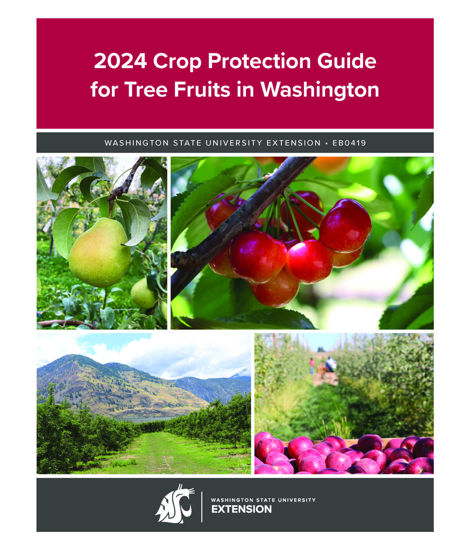
Welcome to the Washington State University Extension – Whatcom County IPM Project. In contract with Whatcom County, WSU Extension has committed to bringing the fundamentals of IPM to Whatcom County pest managing communities.
What is Integrated Pest Management?
Integrated Pest Management, IPM, is a decision-making approach to pest management that involves knowing the crop, pest, ecosystem, and the relationship between these components. IPM focuses on long-term management strategies including biological control, cultural manipulation, and using resistant varieties.
Pesticide treatments are only used when other options are not effective; pesticides with minimal risk to human health and the environment should be selected first. Treatment decisions for a certain pest may differ due to variables such as climate, time of year, type of crop or plant, soil type, and other factors.
The base components of IPM are:
Prevention: Crops and plants should be grown in a way to maximize the health of the plant. Healthy plants are able to withstand more pressure from insect pests and disease.
Monitoring: Regular and systematic monitoring is done to determine damage to the plant and pest population and whether these values are increasing or decreasing.
Identification: Pests and diseases must be correctly identified before treatment options can be determined.
Threshold Determination: For agricultural crops, this is often an economic threshold; for home gardeners, this threshold is determined by how much damage the plant can withstand.
Treatment: Least toxic options are chosen first. These include cultural, biological, and physical methods.
Evaluation: Monitoring is continued after treatment to determine efficacy.
Goals of Whatcom County IPM Project?
About the Whatcom County IPM Project
The WSU Whatcom County IPM Project was created to develop, produce, and conduct research and educational efforts that further develop the attitudes, knowledge, and skills necessary for the acceptance and adoption of Integrated Pest Management (IPM) practices.
This project builds on the successes of the Nooksack Watershed IPM Project, which focused on IPM research and education for raspberry and apple growers. Efforts continue to support IPM in these crops and will be expanded into other agricultural, as well as urban settings.
It is expected that the wide-scale adoption of practical IPM practices will help protect groundwater and surface water supplies in the county and protect environmental resources including fish and wildlife.
Goals
- Continue to support on-farm research and education to facilitate further IPM development and implementation for raspberries, blueberries, and small farms.
- Expand IPM efforts into other systems, which may include community settings (such as city parks and schools), landscape nurseries, and homeowner landscaping practices.
- Develop, produce and conduct research and educational efforts that further develop the attitudes, knowledge and skills necessary for the acceptance and adoption of IPM practices in Whatcom County.
IPM in Agriculture
IPM: Decision Making Tools for Farmers – Coping with Pest Variability (pdf)
A short guide on setting up an IPM program for an agricultural crop including suggestions for pest scouting, setting thresholds, and choosing control options.
IPM – Effective Options for Farmers (pdf)
Following a brief overview of groundwater, this publication discusses the details and logic of IPM as a strategy to prevent groundwater contamination from pesticides.
Puget Sound Pest Management Guidelines: A Guide for Protecting our Water Quality (pdf)
This publication describes pesticide risks to water quality, human health and environmental health and then gives a comprehensive review of integrated pest management that uses real examples from a diversity of commodities and other pest control uses in this region.
List Serve: “Northwest Washington Small Fruit List Serve”
Members of this listserve receive updates related to small fruit production in Northwest Washington. To sign up to receive these emails, send an email to: join-lyndenrasp@lyris.cahe.wsu.edu
WSU IPM Web site – http://ipm.wsu.edu
With a firm foundation of laboratory and applied research, faculty and staff of WSU communicate the latest in crop protection and sustainable pest management tactics to our state’s agricultural producers and other end users.
Guide Manuals:
Small Fruit IPM:
Raspberry IPM Manual
IPM for Raspberries
A guide for sampling and decision making for key raspberry pests in Northwest Washington.
– Raspberry Field Guide (pdf)
IPM for Blueberries
A guide for sampling and decision making for key blueberry pests in Northwest Washington.
– Blueberry Field Guide (pdf)
IPM for Blackberries
A guide for sampling and decision making for key blackberry pests in Northwest Washington.
– Blackberry Field Guide (pdf)
Spotted Wing Drosophila
Information on efforts to understand and manage Spotted Wing Drosophila in Whatcom County and around the Pacific Coast Region.
Raspberry Soil Fumigation
Information on Raspberry Soil Fumigation in Whatcom County.
Tree Fruit IPM:
Apple Leaf Curling Midge
A guide to the Apple Leaf Curling Midge.
Crop Protection Guide for Tree Fruits in Washington
WSU reference guide for tree fruits in Washington State.
Vegetable IPM:
Pest Control of Flea Beetle
Flea Beetle Control Treatment Evaluation and Demonstration in Western Washington State.
Nursery IPM:
Compost Tea – “Brewing Up Solutions to Pest Problems” March 2001 BioCycle
Whatcom County Nursery tries “Compost Tea” with Interesting Results
